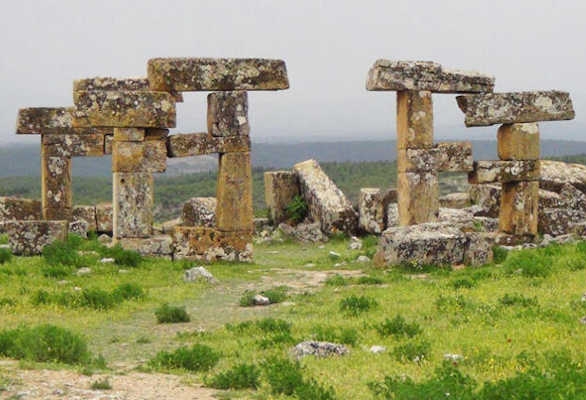



Ancient City of Blaundus - Anatolia's 'Stonehenge', one of best places in Turkiye to observe heavens

Baku, October 11, AZERTAC
Blaundus Ancient City, which is located on the top of a hill in the northeast part of Sülümenli village in Ulubey district of Turkish Usak province, looks like a peninsula surrounded by three stream beds presenting breathtakingly beautiful ruins.
The most special are a series of stone blocks which were once a state building that have earned the nickname the "Stonehenge of Anatolia.
The ancient city, founded in 4th-3rd century BC by those coming from Macedonia during Alexander the Great's Anatolian expedition, was later linked to the Kingdom of Pergamon and the Roman Empire.
The city's Macedonian inhabitants used to even call themselves the “Macedonians of Blaundus.” However not long after Alexander the Great’s reign, Blaundus became part of the Kingdom of Pergamon, and later, was occupied by the Romans. The city experienced its golden age in the Roman era.
The far end of the city has three constructions that stand out with a skillful placement of stone blocks.
Visitors interested in photography from the nearby provinces and districts are welcomed by the structures standing in the city with the splendor of the first day.
Built on a vast plain surrounded by deep valleys and canyons which resembles a peninsula, the city of Blaundus is a 40-minute drive from Uşak.
A temple, theater, stadium, graves made of rock, a colonnaded street and well-preserved city walls are the most notable sites this often-overlooked ancient city boasts.
The monumental tomb is one of the important figures found of Blaundus, whose ruins are quite dilapidated and covered with vegetation. But visitor can still see ornaments and ornate rock carvings on broken pieces.
The ancient city's theater was built on the side of the cliff, however, it is not possible to go all the way down the cliff to actually see it. You may be able to catch a glimpse of its remains by peering over the edge of the cliff-top.
The stadium was built on the northern cliff of the city but unfortunately, besides a few rows of seating, not much else has survived the centuries.
You will also be able to make out the rock graves at the bottom of the valley where during the excavations, archeologists found dozens of rock grave rooms with well-preserved paintings of animals and plants in a variety of colors on the walls.
The remains of the colonnaded street show that the city center was well-preserved and constructed in a grid pattern.
Azerbaijan's Minister of Culture holds meeting with his UAE counterpart in Venice
Azerbaijani pavilion launched at 60th Venice Biennale VIDEO
Azerbaijan`s pavilion to showcase at 60th Venice Biennale